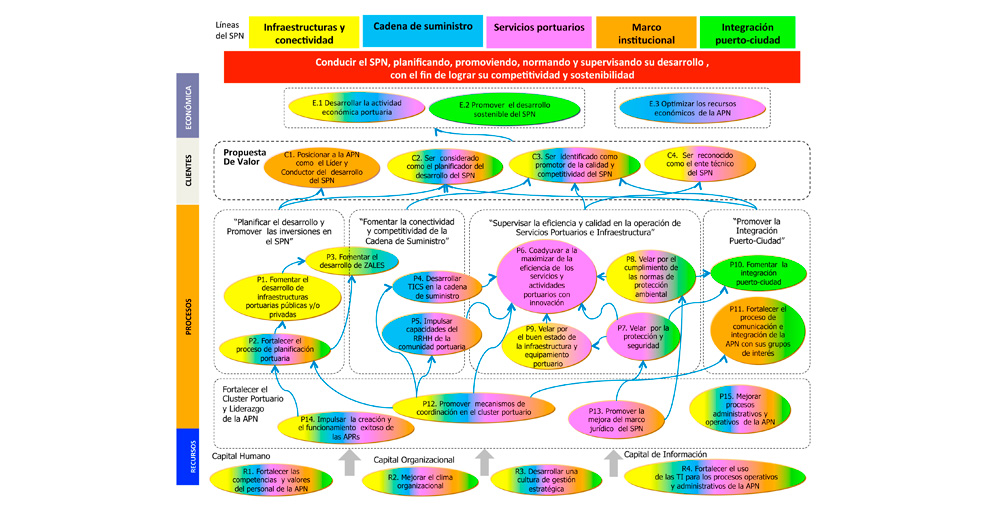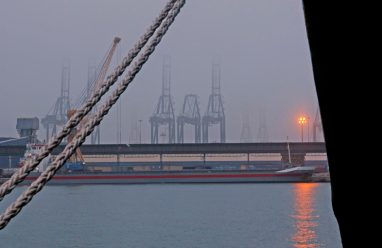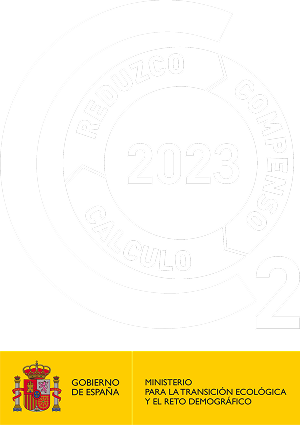The National Port Authority (APN by its initials in Spanish) led the process to Update the National Port Development Plan (PNDP in Spanish), approved by Supreme Decree in August 2012, involving the participation of the Peruvian port cluster. Against this background, the APN assessed the opportunity to update its Institutional Strategic Plan (PEI in Spanish) in order to establish a Comprehensive Strategic Management System (SIGE in Spanish). This system was based on the Balanced Scorecard, an instrument that offers an integrated, comprehensive approach to translating strategy into action.
Indeed, due to the need to ensure the commitment of all the organization’s components, an on-the-job training programme (coaching) was set up at the same time to facilitate the achievement of the project objectives.
The methodology applied to develop the SIGE is shown in the following diagram:
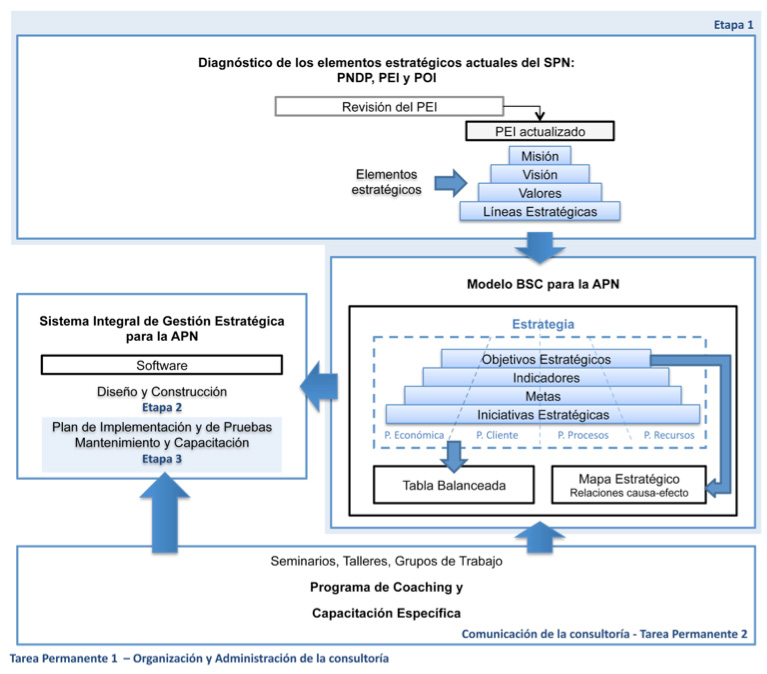
The formulation of the new PEI aligned with the PNDP was carried out under a formal participatory planning and strategic management framework, divided into 5 stages:
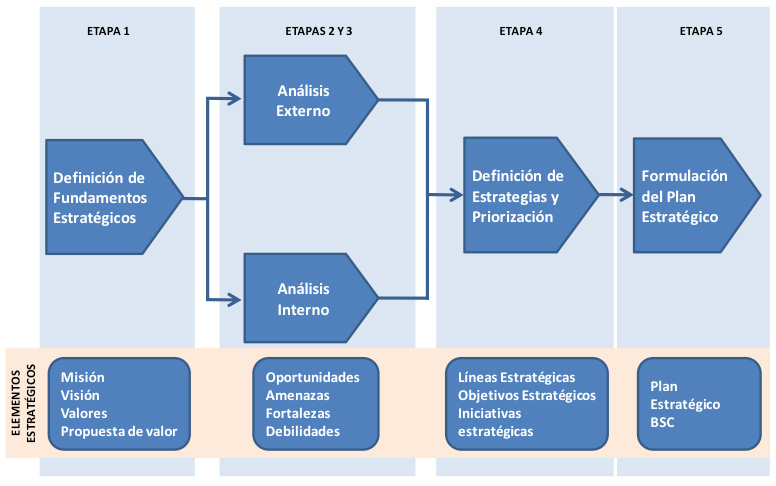
The stages deployed include:
- Updating strategic fundamentals (Vision, Mission, Values and Value Proposition).
- Internal analysis, in order to identify strengths and weaknesses.
- External analysis, in order to identify opportunities and threats.
- Defining strategies and setting priorities.
-
- Preparing and analysing the SWOT matrix.
- Identifying strategic themes.
- Identifying objectives and strategic initiatives.
- Developing and formulating the Strategic Plan accompanied by elements of the Balanced Scorecard management method.
The strategic fundamentals were determined after several workshops at the APN. It should be noted that clarifying the Value Proposition is one contribution of the Balanced Scorecard methodology, in that it explicitly reveals the value attributes for which an organization wishes to be known by its clients, beneficiaries or stakeholders. Under this approach, the value proposition lies at the heart of the strategy, making sure that the objectives set ensure the delivery of each of the defined value attributes.
The internal analysis is a study that identifies the main internal weaknesses and strengths of the institution. This analysis involved mapping the main processes that make up the value chain of the APN and the intangible elements that enable these processes to run properly. These intangible elements are related to human capital, organizational capital and information capital, and are in themselves intrinsic to the development of the processes. It is worth noting that the analysis of the aforementioned intangibles involved incorporating the main findings from the coaching-mentoring process, which was carried out alongside the process of updating the PEI.
The external analysis is a study that identifies the opportunities and threats facing the APN, which should be considered in any strategic approach. In order to follow an orderly process of identifying external elements, a PESTEL framework was applied; that is, considerations and analyses of the Political, Economic, Social, Technological, Environmental and Legal factors that have an impact on APN’s operation and decision-making.
The process of identifying and prioritizing strategies was carried out through the construction of the SWOT Matrix (strengths-weaknesses-threats-opportunities). This matrix constitutes a key element in the process of updating the strategy, as it is produced through the internal and external analysis of the institution.
The abovementioned Matrix, as well as the depiction of the Strategic Framework (National Port Development Plan, PNDP), together with a consideration of best port management practices, helped identify the main strategic themes, objectives and initiatives (projects).
Finally, in order to ensure the successful implementation of the PEI, two management elements of the Balanced Scorecard methodology were defined: the Institutional Strategic Map that depicts the Value Proposition, the strategic themes and objectives; and the Balanced Table, which incorporates the indicators, the goals and the strategic initiatives.
At the same time, during the SIGE project, the corresponding software was developed for monitoring initiatives, indicators and targets. In addition, in the last part of the project, a specialized face-to-face training programme was run for two groups of APN managers in the Port of Valencia.
In summary, the following results were achieved:
- Review of the various plans linked to the National Port Development Plan (PNDP), Institutional Strategic Plan (PEI), and Institutional Operational Plan (POI) in order to ensure comprehensive monitoring of the conceptualization of the SPN.
- Identification of clear success factors for the design of the new Strategic Plan, based on the Balanced Scorecard and aimed at creating value for the institution.
- Analysis and design of an integrated support system for the coordination of strategic management aspects in the APN.
- Design of an integrated system for strategic planning and management, which facilitates communication and provides better corporate information at all levels of the APN, as a prerequisite for achieving the maximum benefits from the project.
- Design of a system for the comprehensive measurement and management of key performance factors and management indicators, accounting for the processes established in the APN.
- Design and implementation of a methodology to manage the objectives and strategic initiatives of the organic units of the APN.
- Development of the APN management model, as part of the entity’s strategic planning, with the support of technological tools to enable its automation and deployment.
- Supporting APN management and technical staff through a coaching-mentoring programme and specific training in the Port of Valencia.
The methodology and process deployed were presented at the 8th Meeting of the Executive Committee of the Inter-American Committee on Ports (CIP) of the Organization of American States (OAS) held on 14th March 2012 in Lima.

